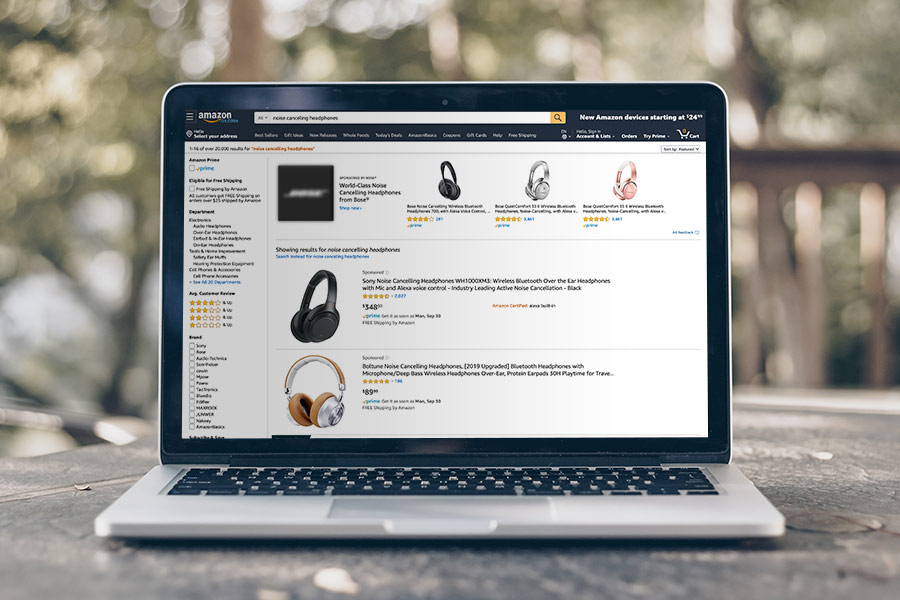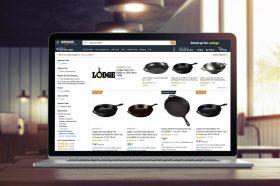Resources - Blog
Amazon Advertising 201 [Webinar Recap]

Stay on top of the latest e-commerce and marketplace trends.
In just a few years, Amazon’s advertising arm has evolved from an optional addition to a brand’s ad strategy to an absolute imperative. Nearly half of consumers (44%) do not click past the second page of search results on Amazon, according to Feedvisor data. Given much of that coveted digital real estate is occupied by ads, a growing number of sellers and brands are implementing Amazon Advertising into their business strategy to increase their discoverability and conversions on the platform.
In fact, 74% of Amazon sellers use the platform’s pay-per-click (PPC) ad options, such as Sponsored Products and Sponsored Brands. As such, for companies today, it is no longer a question of whether you are using Amazon Advertising but how well you are using it. Are you leveraging Amazon’s newest advertising features to beat the rising competition?
In this webinar, Amazon Advertising expert Stefan Jordev, advertising director at Bobsled Marketing, outlines the intricacies of Amazon’s latest advertising options and how you can leverage them through advanced campaign strategies to enhance your brand awareness, increase sales, and drive ROI as you scale your business.
Bid Management 201
Whether you have an in-house team or you are outsourcing your Amazon paid campaigns to an optimization service or agency, bid management is likely often included in your campaign reports. It is an ongoing daily process which is consistent and necessary from the moment you launch your Sponsored Product campaign.
Earlier this year, Amazon rolled out several new bidding and targeting features for Sponsored Products, giving advertisers more options to optimize their campaigns. Throughout the webinar, Stefan uncovered all the layers of Amazon Advertising that require bid management, as outlined below.
Campaign Level Bid Optimization
Still in beta, this strategy includes dynamic bids down only, dynamic bids up and down, and fixed bids. All campaigns that launched before the feature was introduced have dynamic bids down only as the default setting. However, Stefan notes that there are several instances in which it makes more sense for you to use dynamic bids up and down, despite them typically resulting with higher costs.
One instance, for example, is when you are launching a new product. Placement is key for new product launches, as your product does not yet have the reviews or sales history your competitors have. To compete, you might be more willing to take on the additional costs to get your product off the ground until it gains reviews and credibility on the marketplace.
Ad Group Level Bid Optimization
In Amazon’s paid search hierarchy, ad groups are one structure level below campaigns and are used for better organization of different subsets of products or keyword themes within a campaign. They do not have individual budgets, as the budget is set on a campaign level, but each ad group has a default bid set, which affects all keywords, ASINs, or categories that the ad group includes.
Stefan notes that setting adequate bid levels on an ad group level can save you a lot of time later on when you dive into individual keywords bids. As a rule of thumb, and a best practice Amazon Advertising shared on its YouTube channel, you can set the lowest bids for broad match type ad groups and the highest bids for exact match type ad groups, with phrase match being somewhere in the middle.
Match Types Bid Optimization
While this feature can often get neglected, optimizing for the different match types can make a great difference in your campaign profitability. Match types available in an automatic campaign include:
- Close match
- Loose match
- Substitutes
- Complements
This feature is only available for automatic campaigns launched after the feature was introduced earlier this year. Stefan notes that this is a great lever to pull when you need instant results, as focusing on close match mostly improves ACoS greatly.
The rule of thumb for most ROI-focused campaigns is to bid higher on close match and substitutes compared to loose match and complements. Sometimes, when you are targeting a low ACoS and are not concerned about limiting the reach of your campaign, you can pause the lowest performing match types entirely.
Keywords / ASINs / Categories Level Bid Optimization
In Stefan’s words, ASINs and keywords are the foundation of effective bid management on Amazon. Manual Sponsored Product campaigns use keywords, specific ASINs, or Amazon categories as targeting. Monitoring their performance and increasing or decreasing bids on this is an ongoing process which ensures your campaign performance improves as it matures.
Placement Level Bid Optimization
Optimizing bids for placement is another frequently overlooked feature, Stefan says. Optimizing bids for placement helps you to make sure your ads get displayed on ad positions that work better for you. This is done by assigning a percentage increase on the main bid set on the ad group level to get higher visibility either on top of search on the first page of Amazon search results or on product pages.
Final Thoughts
As Amazon continues to invest in its advertising capabilities and introduce new features and targeting options, sellers and brands need to rethink their advertising strategies to optimize appropriately and avoid wasted ad spend. The advanced strategies outlined in this webinar will help you decrease your wasted ad spend and free up capital that you can invest in new, profitable campaigns that drive ROI.
For more details on Amazon Advertising 201 strategies, you can watch the full webinar presentation here.
Learn what Feedvisor can do for your business.
When you partner with Feedvisor, you automatically receive access to our true, AI-driven technology and hands-on team of e-commerce experts. Contact one of our team members today to learn more about our end-to-end solution for brands and large sellers on Amazon, Walmart, and e-marketplaces.




